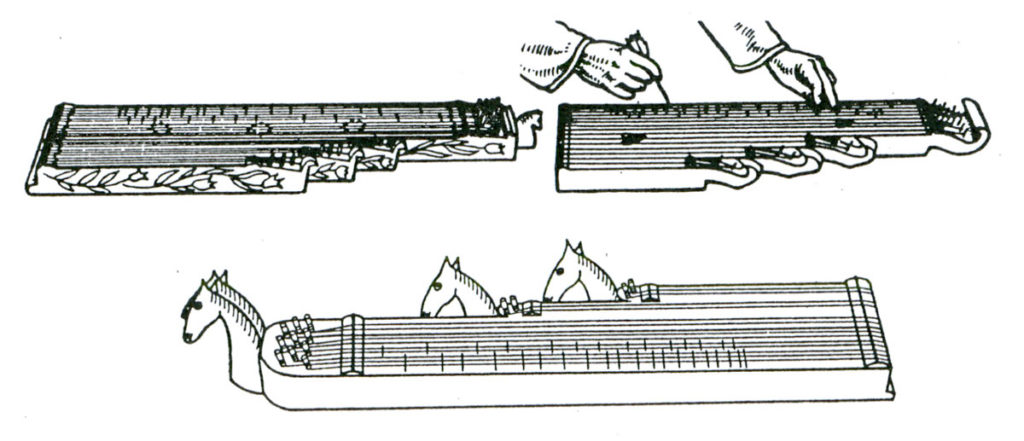ZITHER (citera)
The zither is the most widely used folk instrument since ancient times. Every herdsman and farmer was able to construct one. Anybody could learn to play it. There are three basic forms: through zither, small headed zither and bulging zither. The through zither was made of a single piece of poplar or bass-wood. Metal pegs were driven into one end to hold the steel strings, and tuning pegs were screwed to the other end. The players used a hammer, sharpened quill or a piece of horn to pluck the strings. The small headed (horse-, child-, side-headed) zithers, made of separate pieces of soft and hard wood were common on the Hungarian Great Plain and seem to be a Hungarian specialty. The bulging zithers are of Western influence and were used mainly in Transdanubia.
A good player could fill the room with the zithers distinct sound. In the 20th century it became the instrument of the poor. It was used at weddings and dances because its sound was excellent to support singing, dancing and merry making. The musicians were not paid, as the guests themselves – girls included – took turns in making music.




